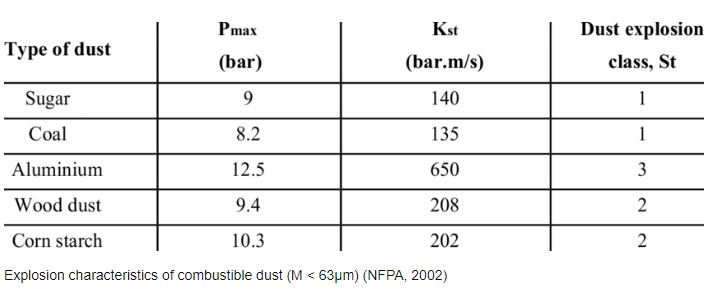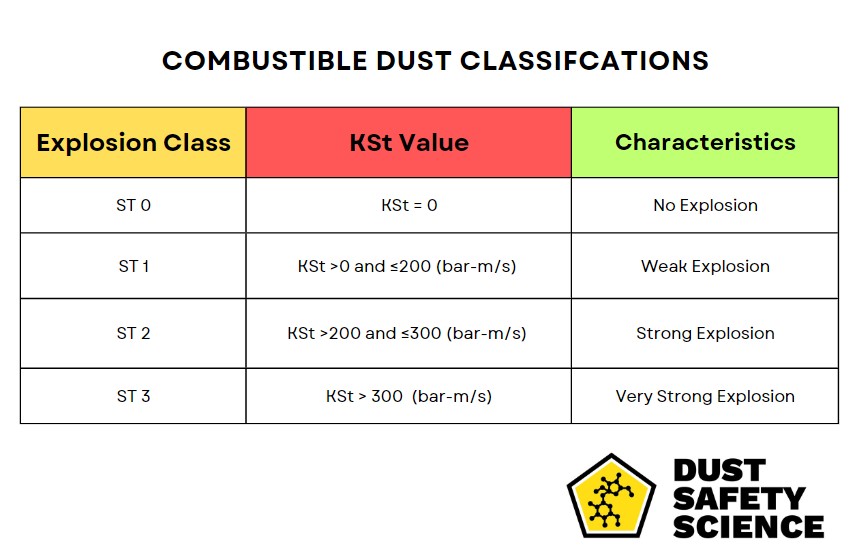Updated March 20, 2025, Authored by Dr. Chris Cloney and Jon Barrett of Dust Safety Science
Dig deep into the NFPA standard and how it combines with other existing combustible dust standards.

The National Fire Protection Agency (NFPA) is in the process of creating a new standard, NFPA 660 Standard for Combustible Dusts, that will combine all existing combustible dust standards. NFPA 660 standard for combustible dust will provide industry-specific standards for managing combustible dusts, prevention of fire, and promoting best practices to safeguard facilities from related combustible dust hazards, fires, and dust explosions.
NFPA 660 is in the Fall 2024 cycle due to the Combustible Dust Document Consolidation Plan approved by the NFPA Standards Council. As part of process, the NFPA 660 combustible dust standard will be all encompassing and combines the NFPA Standards NFPA 61, NFPA 484, NFPA 652, NFPA 654 (with sulfur fires), NFPA 655, and NFPA 664. For consolidated draft and revision cycle information, see the Next Edition tab. Source: https://www.nfpa.org/codes-and-standards/nfpa-660-standard-development/660
- NFPA 600 is a future standard that aims to consolidate other existing NFPA standards related to combustible dust and simplify guidelines and best practices for handling combustible dust hazards.
- NFPA 600 is designed to take a holistic approach to combustible dust safety and address fire prevention and explosions in facilities where dust accumulation can endanger workers.
- Implementing the NFPA 600 is expected to revolutionize combustible dusts and particulate solids safety standards and improve safety protocols across various industries.
Don’t navigate safety alone—connect with an expert today!
TABLE OF CONTENTS
All In One Source, for Standards
NFPA 660: Revolutionizing Combustible Dust Safety Standards
The Creation of the NFPA 660 Standard
Key Components of the new NFPA 660 Standard
Implications for Industry Professionals, Workplace Dust Standards, Safety Protocols, and Practices
Looking Ahead: Implementation and Adoption of the Proposed NFPA 660 Standard
Conclusion
About Dust Safety Science
All In One Source, for Standards
The new NFPA, one combustible dust standard will incorporate the following existing NFPA standards that outline how to manage and prevention of fire, sulfur fires, and dust hazards:
NFPA 61: Standard for the Prevention of Fires and Dust Explosions in Agricultural and Feed Processing Facilities
NFPA 484: Standard for Combustible Metals
NFPA 652: Standard Fundamental of Combustible Dust
NFPA 654: Standard for the Prevention of Fire and Dust Explosions from Manufacturing, Processing and Handling of Combustible Particulate Solids
NFPA 655: Standard for Prevention of Sulfur Fires and Explosions
NFPA 664: Standard for the Prevention of Fires and Explosions in Wood Processing and Woodworking Facilities
NFPA 660: Revolutionizing Combustible Dust Safety Standards
In industrial settings where dust accumulates in dust collection systems, and combustible dusts particles linger in the air, the risk of fires and dust explosions is a looming threat. These combustible dust hazards pose significant challenges for safety professionals and facility managers, necessitating robust standards and guidelines to mitigate potential explosions and risks. Recognizing this imperative, the National Fire Protection Association (NFPA) is considering introducing the new standard, a groundbreaking, all encompassing standard with existing standards, specifically tailored to address a combustible dust hazard. Source: https://www.nfpa.org/codes-and-standards/nfpa-660-standard-development/660
Scheduled for release in the Fall 2024 cycle, this new combustible dust standard is poised to revolutionize the landscape of combustible dust standards, and as a standard for the prevention of future explosions. By combining critical guidelines from existing standards, the new NFPA standard aims to provide a comprehensive framework, with the fundamentals of combustible dust, and increase minimum requirements, for managing combustible dusts hazards across diverse industrial sectors.

Understanding the Need for the new NFPA 660 Standard
The need for a specialized standard like NFPA 660 stems from the inherent risks associated with combustible dusts. When fine particles of combustible materials accumulate in dust collection systems and in the air, they can ignite and lead to devastating fires and explosions. Industries such as agriculture, food processing facilities, grain handling facilities, metalworking, coal processing, wood processing, woodworking facilities, additive manufacturing, 3D printing, and chemical processing are particularly susceptible to dust hazards with combustible metals accumulating inside a dust collection system. A dust collection system design and dust collectors may require extra attention for a root cause analysis, of dust accumulation. The wood processing, agriculture industry, and combustible metals industry are especially prone to a dust explosion hazard. Combustible metals, wood dust in woodworking facilities, and dry goods in dust collection systems within these industries, continue to be problematic with fires and explosions. The new standard would be a significant change for combustible metals, dust collection system design, and associated combustible dust involved.
Historically, addressing combustible dust materials and combustible dust hazards has been challenging due to the lack of specific guidelines and NFPA combustible dust standards, and commodity specific standards. Existing NFPA combustible dust standards, including the NFPA Standards: NFPA 61: Standard for the Prevention of Fires and Dust Explosions in Agricultural and Food Products Facilities, NFPA 484: Standard for Combustible Metals, NFPA 652, NFPA 654: Standard for the Prevention of Fire and Dust Explosions from Manufacturing, Processing and Handling of Combustible Particulate Solids, NFPA 655 (with sulfur fires), and NFPA 664, each focus on specific aspects of dust explosion safety. NFPA 664 (Standard for the Prevention of Fire and Dust Explosions from the Processing, and Handling of Combustible Particulate Solids) has been picked up largely unchanged in Chapter 13 of NFPA 660 standard for combustible dust. NFPA 654 Standard for the Prevention of Explosions from the Manufacturing, Processing, and Handling of Combustible Particulate Solids, will allow for the base in understanding the new standard. However, the absence of a consolidated, all encompassing standard has led to inconsistencies in safety protocols and hazard management across industries.
The Creation of the NFPA 660 Standard
The new combustible dust standard emerges as a response to the pressing need for consolidating combustible dust standards. The Combustible Dust Document Consolidation Plan, approved by the NFPA Standards Council, lays the groundwork for the development of NFPA 660. This plan integrates key existing dust standards, streamlining guidelines, commodity specific standards and best practices into a single, comprehensive, combustible dust standards document.
By consolidating combustible dust NFPA standards such as NFPA 61, which focuses on agricultural and feed processing facilities, and the existing combustible dust NFPA standards of NFPA 654: Standard for the Prevention of Fire and Dust Explosions from Manufacturing, Processing and Handling of Combustible Solids and NFPA 652, which addresses manufacturing and handling of combustible solids. The NFPA 660 ensures that industries have access to relevant and practical guidance tailored to their specific operations, and increase minimum requirements for NFPA standards and safety.
Key Components of the new NFPA 660 Standard
The new standard NFPA 660 encompasses a wide array of topics and guidelines to effectively manage dust hazards with existing standards. Some of the key components of the new standard NFPA 660 include:
-
- Risk Assessment and Hazard Identification: the new standard NFPA 660 provides methodologies for conducting a thorough dust hazard analysis, explosion prevention systems, risk assessments, and identifying potential dust hazards such as electrical installations, within industrial facilities.
- Preventive Measures and Controls: The standard outlines preventive measures and engineering controls, such as a dust collection system and dust collectors, to mitigate the risk of dust accumulation, ignition sources, static electricity, and other potential ignition sources.
- Housekeeping and Maintenance Practices: NFPA 660 emphasizes the importance of regular housekeeping and maintenance practices to minimize the accumulation of dust, including a dust collection system, and ensure the proper functioning of safety systems.
- Training and Education: The standard underscores the importance of comprehensive training and education programs for personnel involved in handling, processing, and managing combustible materials, and identifying ignition sources, such as static electricity.
- Emergency Response and Preparedness: NFPA 660 provides guidelines for developing emergency response plans and procedures to effectively mitigate the impact of fires and explosions caused by dust incidents.
By addressing these critical components, NFPA 660 combines several NFPA dust standards, and equips industries with the tools and knowledge needed to create safer work environments and minimize the risk of dust-related incidents, and a possible combustible dust explosion.

Implications for Industry Professionals, Workplace Dust Standards, Safety Protocols, and Practices
The introduction of NFPA 660 carries significant implications for industry professionals involved in safety management, facility operations, and regulatory compliance. As NFPA 660 becomes the benchmark for dust hazard safety standards, professionals must familiarize themselves with its provisions, and additional information, and integrate a new dust standard into their safety protocols and practices.
Furthermore, compliance with NFPA 660 not only enhances workplace safety but also helps organizations mitigate potential liabilities associated with dust hazards. By adhering to the guidelines outlined in NFPA 660, industries can demonstrate their commitment to safety, with fundamentals of combustible dust, implementing a dust hazard analysis, and minimize the risk of costly fines, litigation, and reputational damage resulting from preventable secondary explosions.
Looking Ahead: Implementation and Adoption of the Proposed NFPA 660 Standard
As the release of proposed standard NFPA 660 draws near, industry stakeholders must prepare for its implementation and adoption, after the final review. Training programs, educational resources, and outreach initiatives can help disseminate additional information about NFPA 660 and facilitate its integration into existing safety management systems.
Moreover, collaboration among industry associations, regulatory agencies, and stakeholders will be instrumental in promoting the widespread adoption of NFPA 660 and driving continuous improvement in dust hazard safety practices and combustible dust standards. At Dust Safety Science, we have talked about the importance of the New NFPA 660 standard in several Podcasts:
-
- DSS206: Announcing the NFPA 660 Public Comment Workshop
- DSS257: NFPA 660 development and rollout process with Laura Moreno
- DSS198: Understanding the public input process for NFPA 660 with Laura Moreno
- DSS175: Update on Development of NFPA 660 & Impact on Industry with Jack Osborn
- DSS147: Where NFPA Is Heading and What This Means For Combustible Dust Code Users with Alex Ing
- DSS128: NFPA 660-Upcoming NFPA Changes & What They Mean For Combustible Dust Safety with Jason Krbec, Part 1
- DSS129: NFPA 660-Upcoming NFPA Changes & What They Mean For Combustible Dust Safety with Jason Krbec, Part 2
Conclusion
In conclusion, NFPA 660 represents a significant milestone and significant change in the ongoing effort to enhance NFPA combustible dust safety standards. By consolidating existing NFPA standards and guidelines into a single, comprehensive document, the NFPA 660 empowers commodity-specific standards in industries, including wood processing facilities, to effectively manage fundamentals of combustible dust and dust hazards. This will create safer work environments for all stakeholders involved, including occupational health and safety risks, with Occupational Safety and Health Administration’s regulations, by managing combustible dust hazards, and fires and explosions.
As industries embrace the one dust standard with NFPA 660 and prioritize dust hazard safety, the prospect of reducing the incidence of fires and explosions becomes increasingly attainable in existing facilities. Through collective action, public comment, and commitment to safety excellence, NFPA 660 paves the way for a future where combustible dust hazards are mitigated, with combustible dust standards, and workplace safety is paramount.
Get the support you need! Contact us for tailored combustible dust safety solutions.
About Dust Safety Science
Dr. Chris Cloney, of Dust Safety Science, provides additional NFPA 660 Standard for Combustible Dusts information, with a Podcast. Click on the latest Podcast Link: NFPA 660-Upcoming NFPA Changes & What They Mean For Combustible Dust Safety

Resources:
Visit Dust Safety Science (Global Incident Tracking)
Visit Dust Safety Academy (Resources, Training and Events)
Visit Dust Safety Professionals (Need Help? Get Support Today!)
Visit Dust Safety Journal for the Dust Safety Science Monthly Journal
Subscribe to our Dust Safety Science Newsletter at Dust Safety Science Newsletter
Visit the Dust Safety Science blog for written articles on combustible dust safety including the latest research, expert opinions, and state-of-the art fire and explosion protection.
